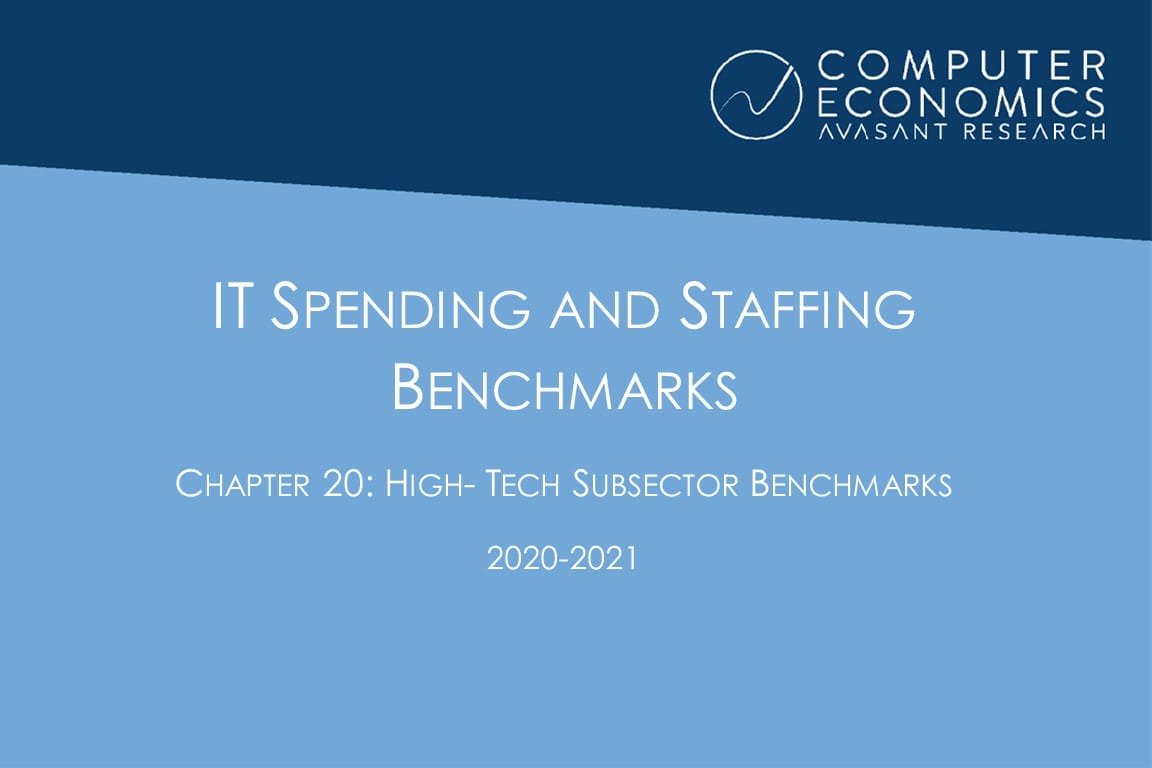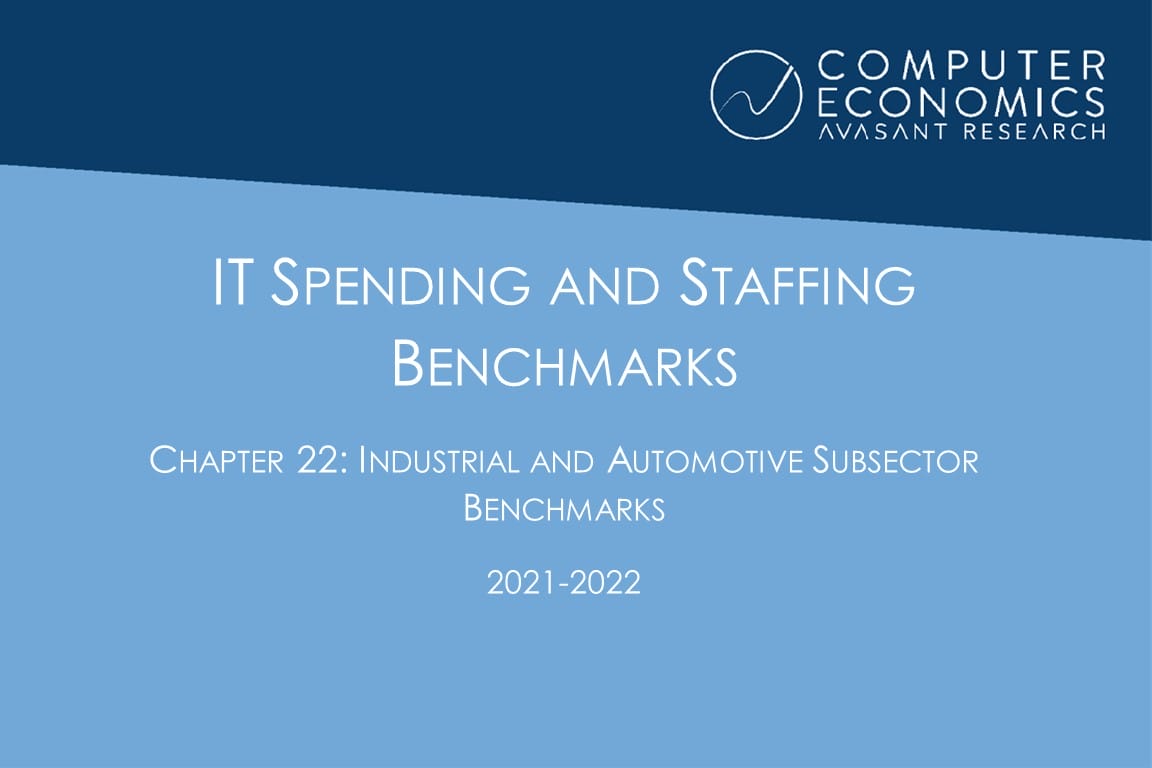Latest Reports
-
![IT Spending and Staffing Benchmarks 2021/2022: Chapter 14: Construction and Trade Services Sector Benchmarks ISSCh14 - IT Spending and Staffing Benchmarks 2021/2022: Chapter 14: Construction and Trade Services Sector Benchmarks]()
IT Spending and Staffing Benchmarks 2021/2022: Chapter 14: Construction and Trade Services Sector Benchmarks
Chapter 14 provides benchmarks for construction and trade services companies. The 27 respondents in the sample range in size from about $50 million to $2.5 billion in annual revenue. The category includes engineering and construction companies, commercial, residential, and industrial construction contractors, oil field services firms, firms that provide mining services, environmental services firms, and other construction and trade services firms.
July, 2021
-
![IT Spending and Staffing Benchmarks 2021/2022: Chapter 15: IT Services and Solutions Sector Benchmarks ISSCh15 - IT Spending and Staffing Benchmarks 2021/2022: Chapter 15: IT Services and Solutions Sector Benchmarks]()
IT Spending and Staffing Benchmarks 2021/2022: Chapter 15: IT Services and Solutions Sector Benchmarks
Chapter 15 provides IT spending and staffing statistics for the IT services and solutions sector. The category includes software companies, software-as-a-service providers, systems integrators, IT solution providers, business process outsourcing firms, and other providers of technology services and solutions. There are 26 organizations in the sample, ranging in size from around $50 million to $40 billion in annual revenue. (52 pp., 32 fig.
July, 2021
-
![IT Spending and Staffing Benchmarks 2021/2022: Chapter 16: Government Sector Benchmarks ISSCh16 - IT Spending and Staffing Benchmarks 2021/2022: Chapter 16: Government Sector Benchmarks]()
IT Spending and Staffing Benchmarks 2021/2022: Chapter 16: Government Sector Benchmarks
Chapter 16 provides benchmarks for government organizations. The 45 respondents in the sample range in size from about $50 million to $68 billion in annual revenue. The category includes city and county governments, federal and state agencies, law enforcement agencies, organizations that provide IT services to government agencies, and other government organizations.
July, 2021
-
![IT Spending and Staffing Benchmarks 2021/2022: Chapter 17: Nonprofits and Charitable Organizations Sector Benchmarks ISSCh17 - IT Spending and Staffing Benchmarks 2021/2022: Chapter 17: Nonprofits and Charitable Organizations Sector Benchmarks]()
IT Spending and Staffing Benchmarks 2021/2022: Chapter 17: Nonprofits and Charitable Organizations Sector Benchmarks
Chapter 17 provides benchmarks for nonprofits and charitable organizations. The sector includes local and national charity organizations, conservation groups, organizing bodies, and other nonprofit organizations. We do not include organizations where the nonprofit status only reflects the entity type, such as nonprofit hospitals, where for all intents and purposes they operate from an IT perspective in a way that is not significantly different from for-profit hospitals.
July, 2021
-
![IT Spending and Staffing Benchmarks 2021/2022: Chapter 18: Education Sector Benchmarks ISSCh18 - IT Spending and Staffing Benchmarks 2021/2022: Chapter 18: Education Sector Benchmarks]()
IT Spending and Staffing Benchmarks 2021/2022: Chapter 18: Education Sector Benchmarks
Chapter 18 provides benchmarks for the education sector. The sector includes public and private colleges and universities, business and medical schools, for-profit educational institutions, and school districts. The 19 respondents in the sample have annual revenues ranging in size from a minimum of about $50 million to around $2.4 billion.
July, 2021
-
![IT Spending and Staffing Benchmarks 2021/2022: Chapter 19: Commercial Real Estate Subsector Benchmarks ISSCh19 - IT Spending and Staffing Benchmarks 2021/2022: Chapter 19: Commercial Real Estate Subsector Benchmarks]()
IT Spending and Staffing Benchmarks 2021/2022: Chapter 19: Commercial Real Estate Subsector Benchmarks
Chapter 19 provides benchmarks for commercial real estate organizations. The 40 respondents in the sample range in size from $50.5 million to over $3.2 billion in annual revenue. The sector includes retail, office, industrial, multifamily, and other property management companies, commercial real estate developers, real estate investment firms, and real estate brokers, consultants, and advisors.
July, 2021
-
![IT Spending and Staffing Benchmarks 2021/2022: Chapter 20: High-Tech Subsector Benchmarks ISS2020 21Chapter20 - IT Spending and Staffing Benchmarks 2021/2022: Chapter 20: High-Tech Subsector Benchmarks]()
IT Spending and Staffing Benchmarks 2021/2022: Chapter 20: High-Tech Subsector Benchmarks
Chapter 20 provides benchmarks for high-tech companies. The category includes computer products manufacturers, telecommunications equipment manufacturers, semiconductor manufacturers, aerospace and defense manufacturers, pharmaceutical makers, biotechnology product makers, software developers, software-as-a-service providers, and other high-tech companies. The 28 respondents in this sample range in size from a minimum of about $50 million to $80 billion in revenue.
July, 2021
-
![IT Spending and Staffing Benchmarks 2021/2022: Chapter 21: Food and Beverage Subsector Benchmarks ISSCh21 - IT Spending and Staffing Benchmarks 2021/2022: Chapter 21: Food and Beverage Subsector Benchmarks]()
IT Spending and Staffing Benchmarks 2021/2022: Chapter 21: Food and Beverage Subsector Benchmarks
Chapter 21 provides benchmarks for food and beverage manufacturers. The 21 respondents in the sample range in size from $65 million to $60 billion in annual revenue. Food and beverage companies produce beverages, snack foods, meat products, seafood products, dairy products, dietary supplements, and other consumable food products. Some are suppliers to other food manufacturers or to the food service industry, while many also distribute consumer products to retailers or direct to consumers.
July, 2021
-
![IT Spending and Staffing Benchmarks 2021/2022: Chapter 22: Industrial and Automotive Subsector Benchmarks ISSCh22 - IT Spending and Staffing Benchmarks 2021/2022: Chapter 22: Industrial and Automotive Subsector Benchmarks]()
IT Spending and Staffing Benchmarks 2021/2022: Chapter 22: Industrial and Automotive Subsector Benchmarks
Chapter 22 provides benchmarks for industrial and automotive manufacturers. The 30 respondents in this subsector make auto parts, aviation products, material handling equipment, engines, machinery, and similar capital goods. The manufacturers in the sample range in size from about $50 million to $7.3 billion in annual revenue.
July, 2021
-
![IT Spending and Staffing Benchmarks 2021/2022: Chapter 23: Commercial Banking Subsector Benchmarks ISSCh23 - IT Spending and Staffing Benchmarks 2021/2022: Chapter 23: Commercial Banking Subsector Benchmarks]()
IT Spending and Staffing Benchmarks 2021/2022: Chapter 23: Commercial Banking Subsector Benchmarks
Chapter 23 provides benchmarks for commercial banks. This subsector includes credit unions and community, regional, and national banks. The 17 respondents in this sample have annual revenue ranging from a minimum of about $50 million to $90 billion.
July, 2021
-
![IT Spending and Staffing Benchmarks 2021/2022: Chapter 24: Brick-and-Mortar Retail Subsector Benchmarks ISSCh24 - IT Spending and Staffing Benchmarks 2021/2022: Chapter 24: Brick-and-Mortar Retail Subsector Benchmarks]()
IT Spending and Staffing Benchmarks 2021/2022: Chapter 24: Brick-and-Mortar Retail Subsector Benchmarks
Chapter 24 provides benchmarks for brick-and-mortar retailers. This subsector includes department stores, clothing stores, convenience stores, pharmacies, hardware stores, nonprofit retailers, furniture retailers, agricultural retailers, and other retailers. The 20 respondents in this sample have annual revenue ranging from $80 million to $63 billion.
July, 2021
-
![IT Spending and Staffing Benchmarks 2021/2022: Chapter 25: Online Retail Subsector Benchmarks ISSCh25 - IT Spending and Staffing Benchmarks 2021/2022: Chapter 25: Online Retail Subsector Benchmarks]()
IT Spending and Staffing Benchmarks 2021/2022: Chapter 25: Online Retail Subsector Benchmarks
Chapter 25 provides benchmarks for online retailers. This subsector includes clothing retailers, home furnishing retailers, dietary supplements and health products retailers, sports equipment retailers, and other online retailers. The 18 respondents in this sample have annual revenue ranging from $80 million to $63 billion.
July, 2021



















